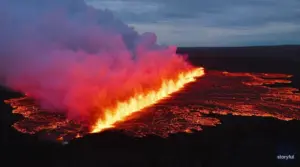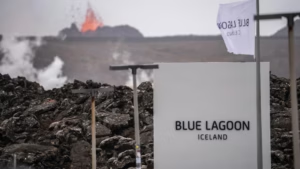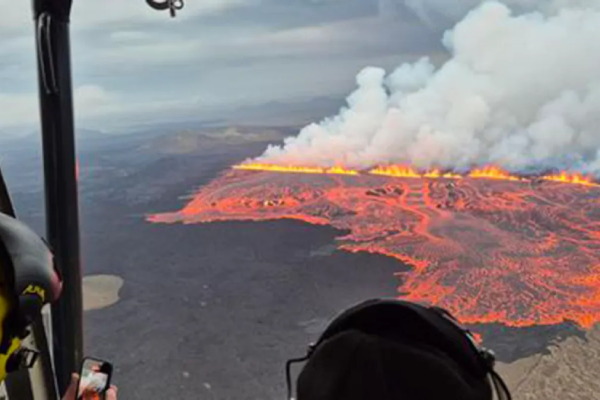A volcanic explosion in Iceland caused guests to leave the Blue Lagoon geothermal spa on Wednesday, with photographs showing lava rushing through a fissure in the Earth’s surface.
Iceland’s Met Office reported that the eruption began around 4 a.m., following an intensive seismic swarm on the Reykjanes Peninsula, southwest of the capital, Reykjavik.
Iceland’s authorities said that the settlement of Grindavík and the Blue Lagoon were safely evacuated. “Travelers in the area are advised to monitor air quality, as gas pollution from the eruption site may occur.”
According to the Met Office, lava from the eruption is pouring southeast from a fissure in the desolate environment that measures 2,296 to 3,280 feet wide.
Grindavik has been repeatedly affected by volcanic activity since November 2023 when a volcano in the area came to life after lying dormant for some 800 years.
“Air traffic to and from Iceland is unaffected, and Iceland remains open and safe for tourists.



This volcanic activity is highly localized and has no impact on infrastructure or attractions across the rest of Iceland,” the country’s government said.
It described volcanic activity as a “fact of life in Iceland, and Icelanders have learned to live with its drawbacks and considerable advantages, such as geothermal energy.”
“The Icelandic Meteorological Office, The Department of Civil Protection and Emergency Management, and a team of scientists from the University of Iceland closely monitor and analyze developments relating [to] seismic activities,” it also said.
Officials said there have been a dozen volcanic eruptions on the Reykjanes Peninsula dating back to 2021.
“There is no way of accurately predicting whether, where, or when seismic activity may result in a volcanic eruption or the possible size of such an eruption, but they are closely monitored and constantly evaluated based on the best scientific data available,” Iceland’s government said.
“Iceland is situated on the Mid-Atlantic Ridge, where the North American and Eurasian tectonic plates diverge, making it one of the most active volcanic regions in the world. Regular seismic events are a characteristic feature of Icelandic geology, ranging from minor tremors to significant earthquakes,” it added.
“Seismic activity in Iceland is often due to magma movement beneath the earth’s crust.
It may sometimes result in magma seeking the easiest path to the surface and becoming a volcanic eruption.”





